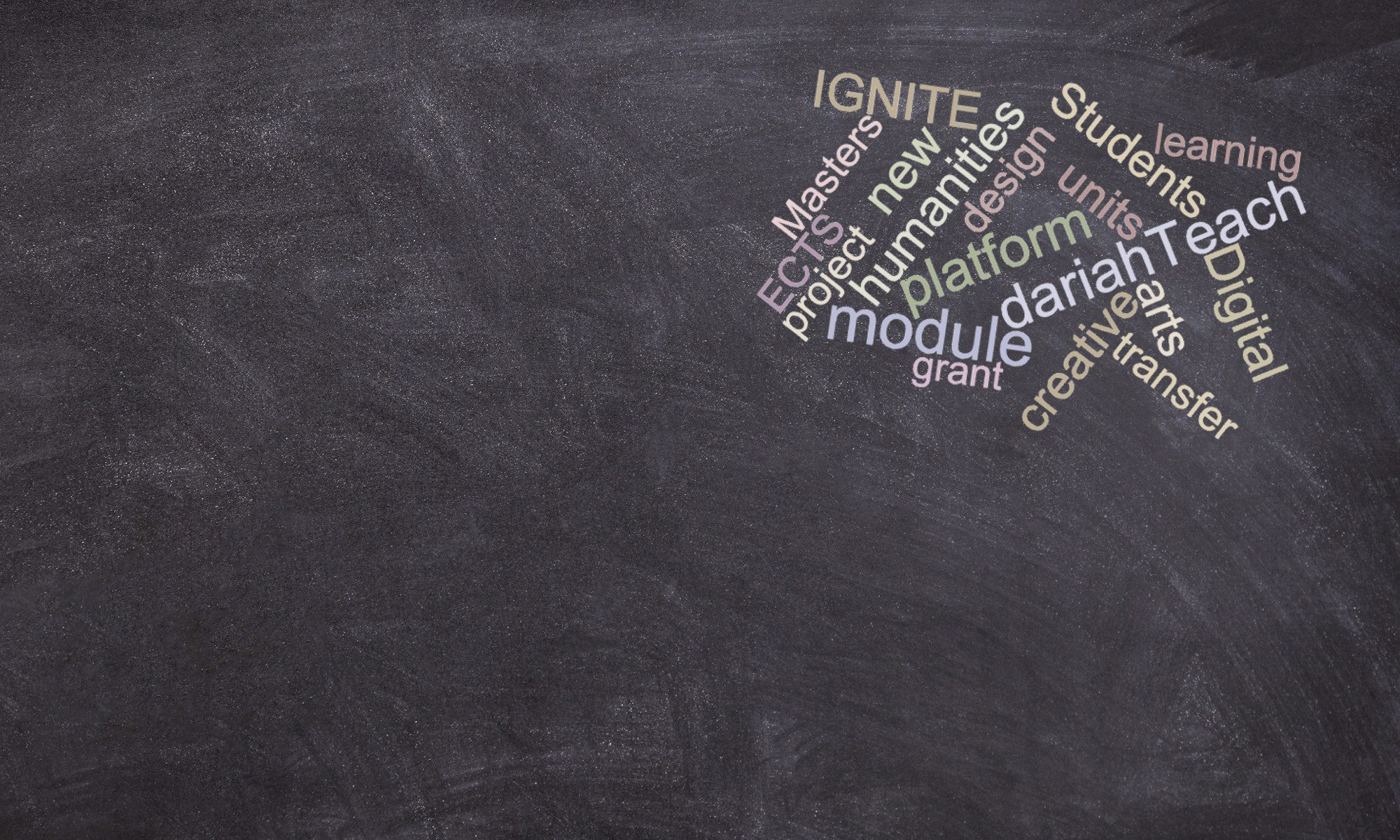IGNITE draws together several disparate shifts in recent education policy and research: online education, digitally-enhanced learning methods, innovation, entrepreneurship, and the turn in humanities education from theory to method.
These shifts form the design axis in IGNITE, going beyond the provision of traditional academic competences by bridging knowledge, theories, and skills through a range of creative, problem solving techniques. A key impact of IGNITE is to meld design thinking methods through the ethos of Maker Culture. It does this through real-world case studies and scenarios from the cultural and creative sectors by integrating software, tools, and methods with analysis from the arts and humanities.
The IGNITE module is made up of six 5 ECTS units. Units 1 and 2 are designed to provide students with the theoretical and practical background needed for the other units. The other four units can be taken individually or in any combination. The full 20 ECTS module is comprised of units 1 and 2, along with 2 optional units (units 3-6).
The module is designed to be used by teachers within their classroom practice (either by exporting the units or module to their institutional instance of Moodle, or by directly registering their class in #dariahTeach) or by individuals through the #dariahTeach platform.
More information on each of the units is available below:
Unit 1: Introduction to Design Thinking and Maker Culture
This course introduces the theories, tools, and methods behind Design Thinking and Maker Culture. It provides an overview of the history of Design Thinking, exploring its various schools of thought and practice, as well as providing an introduction to the more recently theorised space of Maker Culture. This course also explores how those in the arts, humanities, and creative and cultural industries can use the twin pillars of Design Thinking and Maker Culture in their everyday practice. The course is divided into four units.
Unit 2: From Inspiration to Realisation: How to practice Design Thinking and Making
Design thinking: even though the name suggest otherwise, it is much less about knowing and much more about doing. In Donald Schön’s groundbreaking work on design (1984, 1992) he demonstrated that knowing is in the activity of designing, it cannot be separated. This course is designed to help students and professionals to apply design thinking and in this course you will discover that design thinking is learning what is needed by creating it. The focus in this course is on doing design thinking, offering the tools and methods for students and researchers to conduct design thinking to deal with a (wicked) problem they face. Note that the course: Design thinking & Maker culture offers extensive information on design thinking and makers culture as well. It offers most of all information on the what and why. This course ‘Practicing Design Thinking & Making’ focuses above all on the ‘how’.
Unit 3: Remaking Material Culture in Three-Dimensions: From Capturing to Printing
This course is designed to develop your knowledge of the theory and practice of digitising material culture by producing computer generated and printed 3D models. Technologies and methods for recording tangible cultural heritage, including artefacts, buildings, and landscapes are covered, placing particular emphasis on the field of computational imaging. 3D digitisation and 3D printing will be presented both theoretically and practically, discussing the history and the state-of-the-art, best practices and protocols, and characteristic applications from various fields.
Unit 4: 3D Computer Graphics for the Arts: Building Virtual Reality Experiences
Expected release date: November 2020
Unit 5: Storytelling for Digital Narratives and Blended Spaces
This interdisciplinary course addresses how principles of textual, visual, oral, and place-based storytelling challenge and enhance the conceptualisation, construction and experience of digitally- created worlds connecting to real-world places, locations, and landscapes. Focused on the underlying belief that technology and narrative create a feedback loop, with one mediating the other, this unit will be based on iterations of ideation, conceptualisation, and prototyping to integrate critical insights that will push on the boundaries of established beliefs and the regulated time-space we live by, in the connectedness of datafied space and localised place.
Unit 6: Game.Play.Design in the Arts and Humanities
This course introduces you to core concepts and theories within the field of game studies, game jams and game design.
Contact us or register for a free account on #dariahTeach to learn how IGNITE could benefit your projects and career.
![]()
If you are a design professional or educator who wishes to use IGNITE with your team or students, explore the possibilities to register an entire group and customize courses on #dariahTeach.


